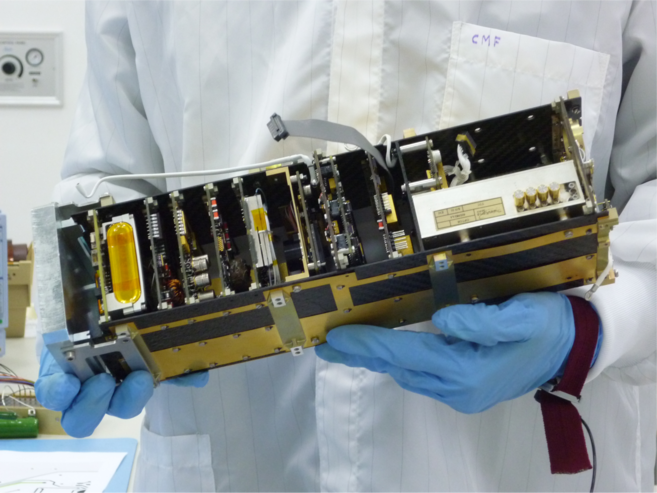Scientists at the Optical and Quantum Communications Group (iTEAM- Universitat Politècnica de València) have collaborated on satellite OPTOS of the Instituto Nacional de Tecnología Aeroespacial , whose launch into space
took place last Thursday (December 5, 2013).
OPTOS experiments on board in three areas: magnetism , optics and radiation . In the first case , the INTA nanosatellite will test giant magneto resistive (GMR ) to measure the Earth\\’s magnetic field. Furthermore, the optical experiments are related with the study of the lens degradation in a low resolution optical camera at space environment and with the design of photonic sensors measuring of temperature and structural stress based on optical fiber Bragg (FIBOS: FIber Bragg Optical Sensors) . It is in this experiment which the work developed from the Universitat Politècnica de València is framed, which was conducted by GCOC – iTEAM researchers David Barrera and Salvador Sales, where new techniques have been applied in the development of sensors and their interrogation systems.
The satellite follows the standard 3U CubeSat (dimensions : 10 x 10 x 34.5 cm; weight : 3.8 kg) . With it , INTA has managed to integrate a large number of scientific experiments and new subsystems and technologically advanced within a very small platform. The final result is one of the most worldwide advanced cubesat satellites that has been done so far.

